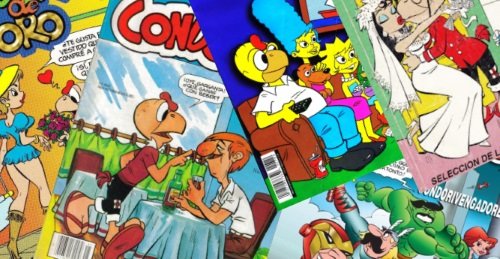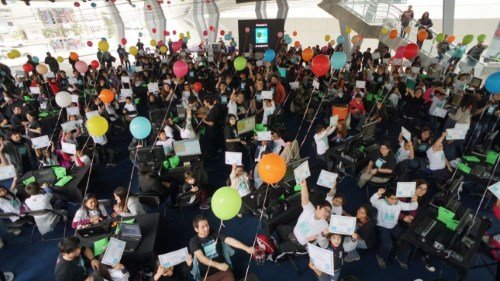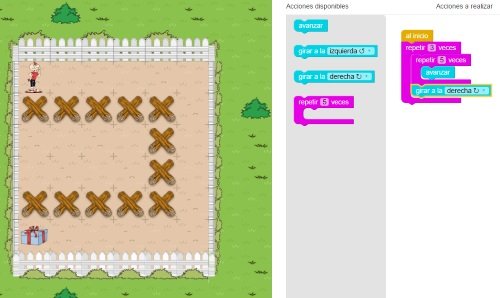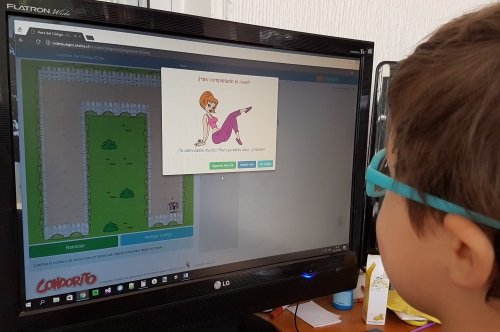Learn to code with Condorito!
My kids know Condorito since they were very young. When Diego (12) learned to read, I started buying Condorito magazines at least once a month, and he always enjoyed and shared with me the jokes he liked the most. And Santi (4), although he can’t read yet, he has always seen the older brother read those magazines and perfectly knows Condorito and his nephew Coné.
Like my kids, thousands of children and adults in Latin America have grown up reading Condorito comics, the character invented by Pepo more than 60 years ago. The magazine has been published in several countries in the region, and the comics currently appear in more than 100 Spanish-language newspapers.

So when I heard that the new Hour of Code Chile tutorials would have Condorito in the key role, I could not but rejoice. The popularity of Condorito would help thousands of children to get motivated with the idea of learning how to code.
The Hour of Code
The Hour of Code is an international campaign led by Code.org with a clear main objective: familiarizing children with the notions of code programming. The organizers, like many other academics, scientists and experts in the subject, are convinced that programming will be the language of the future and that it will be a key tool to face the challenges of the next fifty years.
The campaign aims to get children around the world to solve exercises using the principles of code programming for one hour, the Hour of Code, within the same week. To solve the exercises, children must tell some character what steps to take, using the fundamental principles of functional programming.
Last year, a group of institutions led by Kodea Foundation organized a local version of the event in Chile, coordinating it with other countries in the region. In addition, with the support of the C-100 group, from the Department of Computer Science at the University of Chile, they prepared a special tutorial with local themed exercises, to make them feel closer and easier to understand.

The campaign was a tremendous success and more than 900 schools joined the challenge. Overall, it is estimated that more than 20,000 children participated doing the tutorials during the first week of October, along the whole country. Not bad for being the first year that Chile was part of the event.
Condorito in Hour of Code 2016
This year, aligned with the same goal, a team from the University of Talca and the new Game Development and Virtual Reality Engineering career, took the last year tutorial and added the popular Condorito characters.
The result is an entertaining set of exercises with some of the most iconic characters of Condorito. The set of problems adds a very simple story and lightens the background motivation: to bring children into the world of code programming. The tutorial is already online and can be played in the Hour of Code Chile website.

Of course, I also wanted my children to participate in the Hour of Code.
Santi was immediately motivated when he saw Condorito on the computer screen and he quickly wanted to play. As he is only four years old, and he is still unable to read, the truth is that there was no chance that he would solve the exercises by himself, but I guided him explaining each level goal and asking him how many steps the character had to move or where he had to turn.

I know that with this experience he did not learn to code, but I am sure that he got some minimal programming notions. And as it grows, I will continue motivating him to get closer to the world of code programming. I don’t care if he wants to be an actor, a football player, a scientist or a writer. Computers, robots and being able to communicate with machines is something he will need in his future and the sooner he masters these skills, the better for him.
Have you already participated in the Hour of Code? Get on board and help spreading the message to reach many more children!
Juan Pablo makes videogames since he was 8 and he is a father since 2004. Today, he has three children and he has worked in more than 20 videogames. He got interested on how paternity and the videogame industry are related and he decided to write about it, founding "Papa Game Dev".
Leave a Comment
Your email address will not be published. Required fields are marked *

